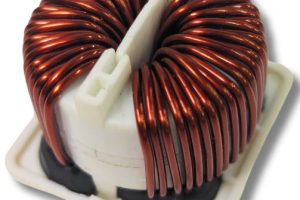
Voltage ratings of 400, 600 and 1,000V are available, and capacitances from 100nF to 10μF, plus 15 and 20μ in the 400V range
“Able to handle high surge currents without degrading, Electrocube’s 985B is a rugged, non-inductively wound double metallised high-current capacitor [series],” according to component distributor NewYorker Electronics, which is stocking the parts. The capacitors are “designed and optimised for high temperature, high current applications subject to ac and pulsing signals. The ability to handle high surge currents without degrading makes it an excellent replacement for electrolytic capacitors”.
The axially leaded cases are oval in cross section. As an example, the body of a 400V 5μF device measures ~19 x 24 x 43mm long. At 600V this increases to 23.6 x 29 x 55mm, and then to 49 x 55 x 57mm at 1kV.
These three are rated at around 16A and 100kHz ESR is around 8Ω – check the data sheet for specific values
 Operation is over -55 to +105°C at rated voltage and recommended up to 100kHz.
Operation is over -55 to +105°C at rated voltage and recommended up to 100kHz.
Devices will withstand 150% of dc rated voltage 1 minute at 25°C, and 140% at 85°C for 250 hours with not more than one failure in 12 – 5mA limit applies in both cases.
Dissipation factor (1kHz) is ≤1% at 25°C and dielectric absorption ≤0.1% at 25°C per MIL-C-19978.
The series is manufactured with a protective clear wrap and the epoxy end-fills meet the flammability requirements of UL94V0.
Both RoHS-compliant and non-RoHS version are available, with some value restrictions. Customisations including circular bodied construction and lower dissipation factor are possible.
Applications are foreseen in solar, wind and steam-power generation, avionics, electric vehicles and robotics.
 Electronics Weekly Electronics Design & Components Tech News
Electronics Weekly Electronics Design & Components Tech News


